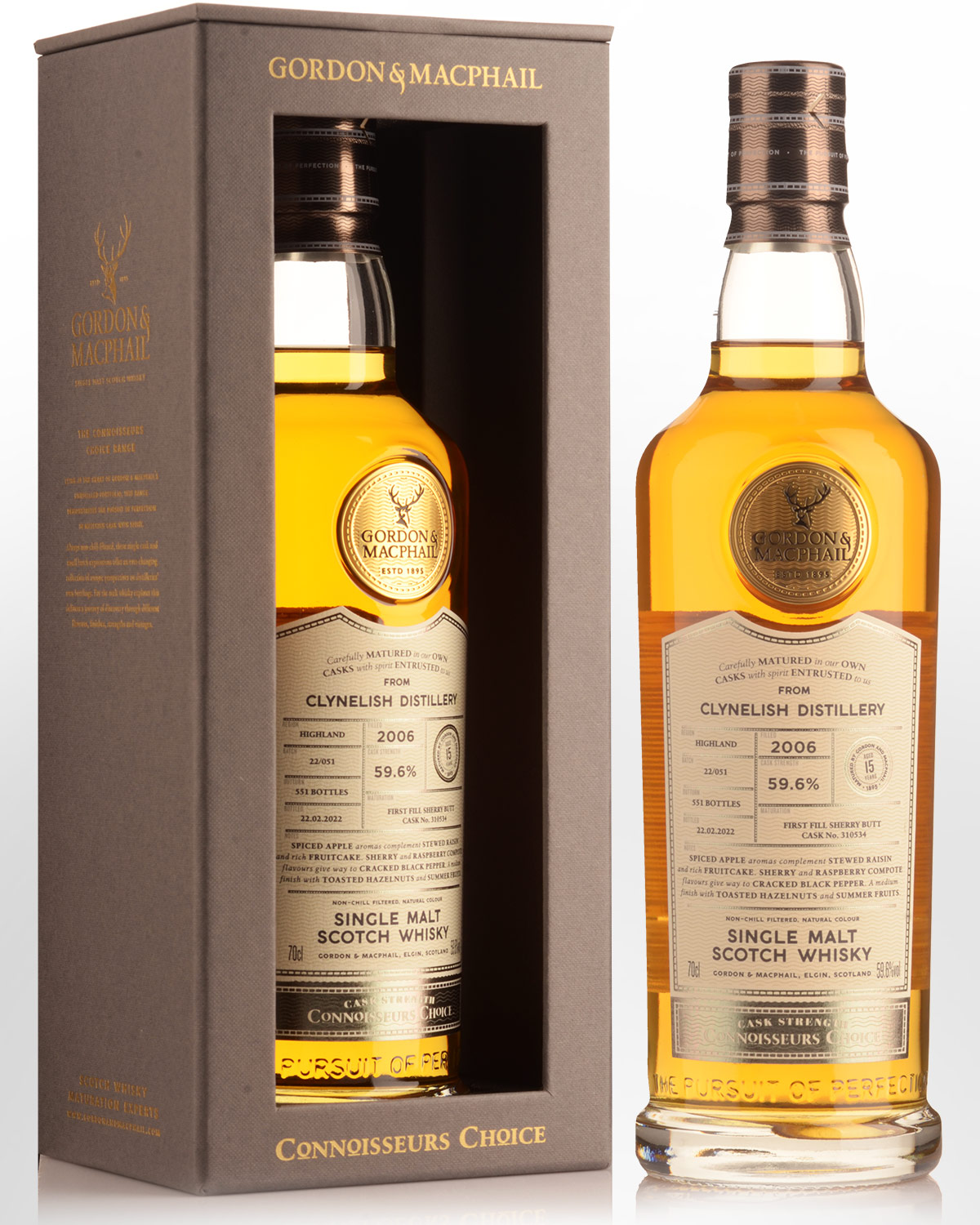
- Limit One per customer
2006 Gordon & Macphail Connoisseurs Choice Clynelish 15 Year Old Cask Strength Single Malt Scotch Whisky (700ml)
One of Scotland's finest marques, from one of Scotland's most reputable independent bottlers.
When it comes to Clynelish, finding almost anything besides the standard issue 14 year old is a cause for celebration. A tiny percentage is sold as a single, the rest is allocated to Johnnie Walker's Gold blend. The quality is consistently very high, and both Diageo and whisky drinkers know it. Single cask / natural strength expressions are increasingly rare, in fact, if it weren't for the independents, there'd be next to nothing on the market. The provenance of this bottling means you're buying with added confidence. Gordon & Macphail also tend to have more sherry-casked Clynelish than most other indies. No.310534 is a first-fill, which is unusual. According to one blogger, the nose explodes and the style is floral with a fantastic richness. The distillery's oily beeswax character is maintained against a marmalade-like sweetness of apricot and oranges. Sounds like sherry and Clynelish dance well together. This may even strike a chord with Diageo's official release from 2016: a NAS, fifteen-year-old minimum European oak assemblage that hit the shelves at $1000+). This make is gathering momentum with collectors and routinely sells out. Of the 551 bottles released there's significantly less on offer for Australia. More about its reputation below. 59.6% Alc./Vol. Non chill filtered.
Notes from the bottlers... Spiced apple aromas complement stewed raisin and rich fruitcake. Sherry and raspberry compote flavours give way to cracked black pepper. A medium finish comes with toasted hazelnuts and Summer fruits.
"Make no mistake" says Jim Murray, "Clynelish ranks among the ten best distilleries in the world..." In his 2022 Whisky Bible, he positions it as one of the most highly rated and affordable malts of the annual. Serge Valentin of whiskyfun.com ranks Clynelish a Grand Cru Classé and one of his favourite makes. The style stands out for its low-peat coastal character, which is often notably waxy (think snuffed candles, beeswax or wax lined jackets) complexed by hints of orange peel and briny sea air. Some bottlings also reveal a subtle peatiness referencing Brora. The causal link to its distinctive flavour profile is explained by scotchwhisky.com: "Clear worts and long ferments start the process, while distillation involves maximising copper conversation – unusually, but not uniquely, Clynelish’s spirit stills are larger than its wash stills. This regime would help to produce a fruity spirit were it not for what happens in the feints receiver. In any distillery there is a natural precipitation of oils in the tank which would normally be removed during the distillery’s annual silent season when the plant is fully cleaned. When this happened at Clynelish, the waxy character disappeared. Realising that the gunk had specific qualities, these days it is removed during silent season and then replaced. The mature character retains waxiness as a mouth-coating texture allied to citric notes and, occasionally, a little mineral/ozone hint. Tastings of single malts (and blends) from the 1950s and 60s suggests that waxy was a significantly more prevalent style industry-wide in those days."
to most of Australia
